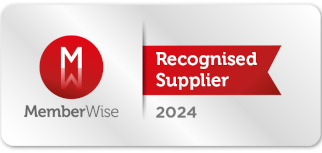
Podcast distribution: social media, SEO and five-star reviews
Jessica Bennett,
-
DOWNLOAD
Your Content Marketing Checklist >

-
REQUEST TODAY
A Content Consultation >

So you’ve got your theme, hosting platforms and recording schedule nailed, so how do you go about podcast distribution to get your audience?
We've previously written about podcasting basics for brands but just as important as the content itself, is how it reaches and connects with your audience. Sites like Anchor.fm ensure visibility of your podcast across all relevant podcast platforms where users can ideally search it out or the subject you're podcasting on.
But of course, any audience needs to know to search it out in the first place - so just uploading the podcast to these channels is only doing half the work and hoping for the best.
Content promotion is essential when creating content of any kind. As with any other type of content, simply building something does not guarantee you an audience. We’ve previously written about distribution strategies for print magazines and despite the different content formats there are some learnings that are the same for podcasts.
How to create a podcast distribution strategy
Understanding your audience is key for distribution of any content; quite simply, you need to put it where your audience will find it. Knowing your customer is also essential in order to find new opportunities for your distribution strategy.
We often use social listening tools such as Pulsar, which can be an excellent way to gather data to make an informed decision about what – and where – will work for your audience.
In addition, every brand should be repurposing key content to maintain its digital channels and engage its audiences.
Things to ask yourself are...
- Are there key takeaways from a podcast interview that you can reformulate into a blog, which will then direct people to the full interview podcast?
- Are there any great soundbites you can share in short form on social media to attract potential listeners?
This will help to reach other audiences and drive interest in the brand itself.
SEO for podcasts
Thanks to technological breakthroughs in how computers understand spoken human language, which have led to the meteoric rise of smart speaker ownership and verbal searches, it is now possible to apply all your SEO know-how to podcasts.
Let’s start with keywords. Ideally, you would include these in your podcast title to make sure you’re targeting the correct audience right away. Podcast titles need to grab attention and tell the listener what to expect.
You should also use keywords throughout the podcasts themselves. The same rules apply for written and aural SEO – choose keywords with high search volume and low competition.
The same also applies for tags – approach them as you would a written piece. Tags will tell people what your podcast is about, so use tags that are relevant to your content but also match what people might be searching for. Categories, genres, themes – use several to boost your podcast’s SEO.
Despite the aforementioned technological advances, search engine understanding of speech is not infallible, so it’s worth including a transcript of each podcast episode too. This will also show you how well you are using your keywords throughout your podcast – if they are only coming up once in your 30-minute podcast, you may need to review your content plan.
Use social media to distribute podcasts
If you’re a brand creating a podcast, the likelihood is you already have an audience of some kind to which you can promote your podcast.
When it comes to owned media, don't forget the value of your mailing list. It may sound obvious to say, but don't forget to promote your podcasts here, again quotes and interesting snippets can act as valuable teasers.
Another important tool is your social media. Gather data about your audience and theme to figure out the best platform, then post links to your podcast there.
Shares and comments will not only boost your distribution, but will also give you live, ongoing feedback as to what works and what doesn’t, so you can adapt as you go. You can also interact with your audience to gather data – next time you post a podcast episode, why not ask where people are listening? This will give you valuable insights into audience behaviour.
Whichever podcast platform you have chosen, it will have some form of review or rating system. Don’t be afraid to ask for that positive feedback! Reviews and ratings let search engines know which podcasts are a success and if you can get an established site (such as a podcast guest’s) to give you a boost, then even better!
Finally, though it’s not an absolute necessity to have a website for your podcast, if you already have an optimised website that has an audience, then use it.
As mentioned above, you can repurpose content from the podcast and these teasers can be distributed and boosted further afield digitally as part of any outreach or paid for campaign too, also helping with brand awareness at the same time.
Make podcasting part of your content marketing
For successful podcast distribution, you need to look beyond the hosting platform. Use the content you generate with your podcast as part of your wider content marketing strategy, seeding content across your social media and website. And, with search engines’ understanding of spoken language coming on leaps and bounds, make sure you’re optimising your podcast for search, too.
Read more insightful articles
See more from the blogContent marketing – are you taking a sustainable approach?
The changing face of the luxury consumer
Evaluating the success of your email strategy
How to create a digital magazine
Proud to be a winner of industry awards, recognised as content marketing experts in print and digital media.












